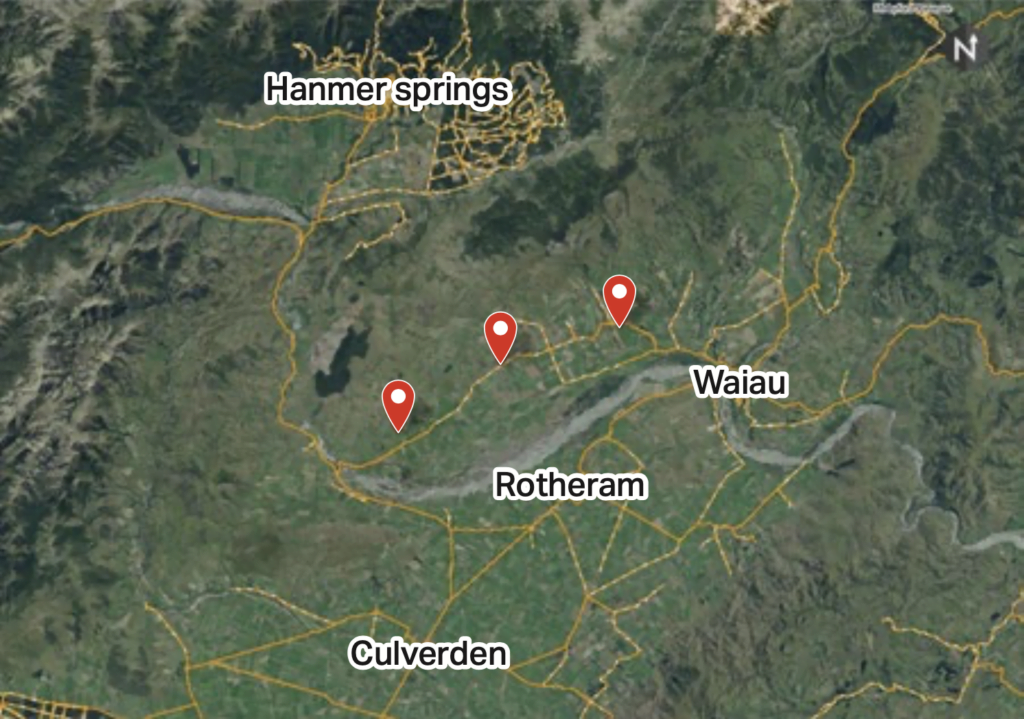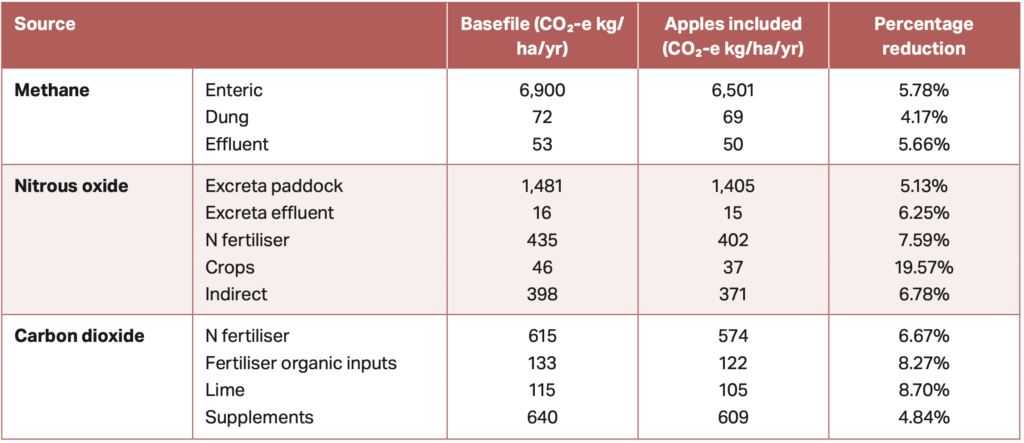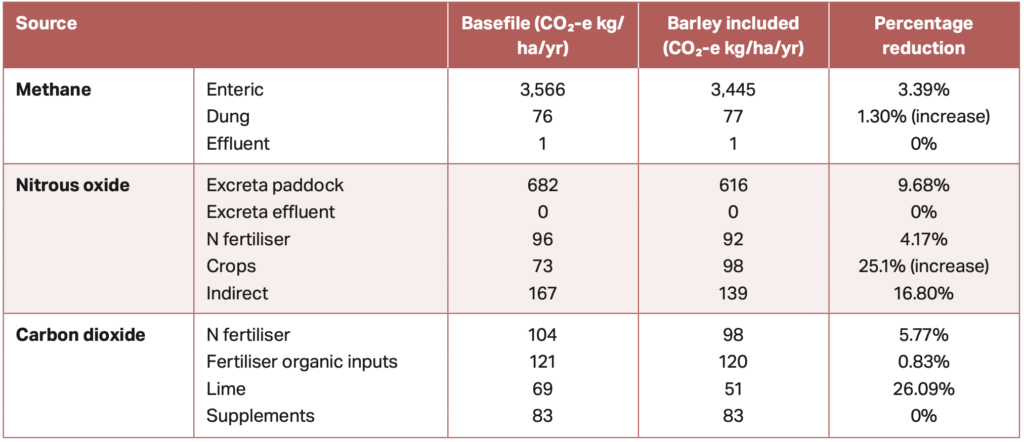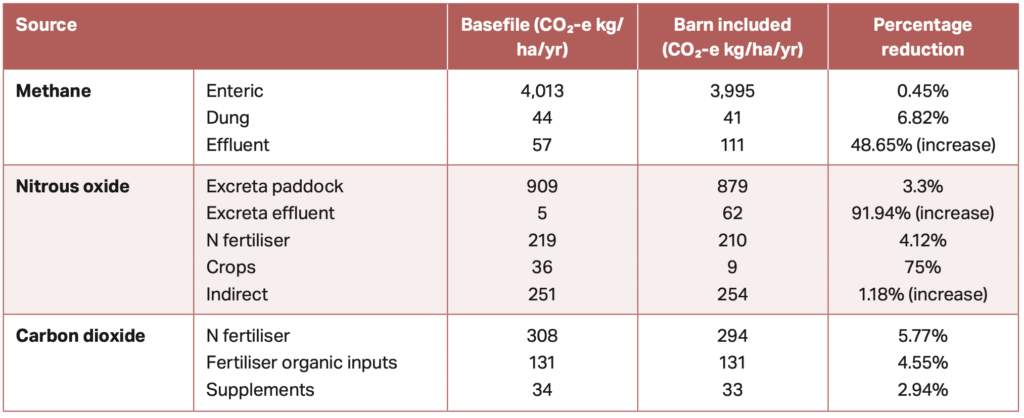Fragile Balance Between Environmental and Economic Sustainability
Land-use diversification presents challenges and opportunities for three North Canterbury farms involved in a recent study.
Diversifying land use may bring environmental benefits. However, there is a fragile balance between environmental sustainability and economic viability, according to a study of land-use diversification challenges and opportunities for three North Canterbury farms.
“Farmers want to reduce their environmental impacts, but it is important to appreciate the economics of change. If changes are drawn out over a period of time they are more achievable, which is a factor to be considered if regulators want to encourage people to invest in land-use diversification,” says study author Harry Millar of Rural Consulting.
The three farming businesses that were part of the study funded by the Our Land and Water Rural Professionals Fund, were each committed to improving both the environmental and economic sustainability of their operations.
“This study was very much farmer-driven. The three farms, all members of the Upper Waiau Independent Irrigators Group, have been actively involved in catchment projects which they have been working on intensively for the last three years.
“The owners had expressed interest in understanding more about different land-use options in the district, which could contribute to improving environmental sustainability, and which led us to design this project,” says Millar.
Located in the Waiau Uwha River Catchment close to Culverden in the Hurunui District of North Canterbury, the farms are Leslie Hills, Chamrousse and Edale (Map 1).
The options investigated were converting 25 ha to apples at Leslie Hills, introducing an arable catch crop following the winter crop at Chamrousse, and constructing a composting barn for the wintering of dairy cows at Edale.
Farmers want to reduce their environmental impacts, but it is important to
appreciate the economics of change.

Cumulative impact of land-use diversification
Why: To assess how land-use diversification impacts environmental management and freshwater quality, and the associated economic considerations.
Where: Three farms (Leslie Hills, Chamrousse and Edale) located within the Waiau Uwha River catchment close to Culverden in the Hurunui District of North Canterbury.
Who: Harry Millar and Josh Brown (Rural Consulting Ltd), John and Maury Penno (Leaft/Okoura Foods), Greg Dryden (Fruition Horticulture), Matt Gardner (Edale Farms), Grant Florance (Chamrousse Farming) and Duncan Rutherford (Leslie Hills Partnership).
What:
- The cumulative environmental impact in the catchment of changes modelled across the three case study farms revealed the potential for: a 13% decrease in total nitrogen (N) loss below the root zone (5,969 kg/N/year); an 8% reduction in phosphorous (P) lost in run- off (77 kg/P/year); and a 3.6% reduction in greenhouse gas emissions (GHGs) (430 CO2-e tonnes/year).
- Uptake of land-use diversification will hinge on the individual’s financial situation and ability to absorb substantial changes to their current systems.
- Each land-use diversification option shows merit in addressing key environmental metrics of N, P and GHGs while still offering medium-to-long-term financial viability.
Quantifying the environmental benefits
Desktop modelling utilising OverseerFM compared how these changes, which aimed to suit the biophysical and operational abilities of each business, could benefit the environment in the same catchment.
“With relevance to farm systems throughout New Zealand, the project also attempts to quantify the potential benefits of working collectively within a catchment to address freshwater quality, using solutions tailored to the capability of individuals and their farms’ inherent natural features,” says Millar.
The research showed that if all three properties adopted the modelled land-use changes, there would be a cumulative reduction in nutrients and GHGs from the catchment (Tables 1-3).
However, Millar says two of the proposed conversions – building a composting barn and establishing an apple orchard – would be expensive. The lowest cost, but still effective in its environmental impacts, was planting an arable catch crop in late winter.
Case study farm 1: Leslie Hills
Leslie Hills is a 2,266 ha diverse farm system run by the Rutherford family. The farm incorporates an irrigated dairy platform alongside irrigated dairy support. Dryland hill country is utilised for sheep and beef breeding. A mix of fodder beet and kale is grown through the winter. Annual rainfall averages 850 mm to 900 mm.

The Rutherford family are considering establishing an apple orchard. While there would be a significant saving in relation to land costs, total capital costs of $12,751,474 for converting to an apple orchard presented a challenge.
“Development costs make up half the capital outlay, which introduces an immediate financial hurdle to any landowner wishing to pursue this venture,” says Millar.
Benefits to the environment were modelled, and included:
- Converting 25 ha to apples would result in a 5.6% reduction in total cow numbers, an assumed decrease in winter fodder crop area by 6 ha and
a subsequent fertiliser input reduction of 7.7%of total nitrogen (N) applied. This reduction in fertiliser application would in turn reduce total N loss and N loss per hectare, alongside an 8.3% reduction in N leaching from urine patches asa result of the area removed from grazing. N surplus would reduce by 5.5% - Total phosphorous (P) loss would reduce by 6.1% and P surplus by 8.6%, mainly driven by an 8.3% reduction in P fertiliser inputs
- Reduced fertiliser use and an assumed reduction in manufacturing requirements would combine to contribute to a total decrease in GHG emissions of 3.8% or 306.4 tonnes C02-e/year. The conversion would require a significant increase in staff numbers, from the current nine permanent full-time equivalents (FTEs) to 69 casual FTEs during harvest.
The conversion would require a significant increase in staff numbers, from the current nine permanent full-time equivalents (FTEs) to 69 casual FTEs during harvest.
“This highlights a potential risk given the challenges the agricultural industry is facing regarding the acquisition of skilled staff,” says Millar. Providing accommodation during harvest for casual employees was another consideration.
Case study farm 2: Chamrousse
The Chamrousse operation run by the Florance family is spread across two blocks known as ‘Chamrousse’ and ‘Pass Stream’, which together account for 610 ha. More than 50% of the property is irrigated. This irrigation enables consistent winter crop yields and the ability to winter dairy cows through the June and July period on fodder beet and kale, while also growing out young dairy replacement stock on high-quality grass. Annual rainfall averages 850 mm to 950 mm.
The Chamrousse land-use diversification option investigated a subtle change to an existing cropping rotation to maximise the potential environmental outcomes for limited costs. The study showed catch crops had the potential to produce gross margins of $1,261/ha on average.
The lowest cost, but still effective in its environmental impacts, was planting an arable catch crop in late winter.


Sowing barley in late August with the crop harvested for grain in February would have minimal impact on stocking rates. However, this would lead to significant increases in total grain yield and a reduction of the area sown in winter fodder crop by 13%.
Including barley could result in a total N loss reduction of 27% and 26.3% when measured using the kg/ha metric. The primary drivers include a 6.5% decrease in N inputs via fertiliser, a 22.2% lowering of urine patch leaching and a 36.4% reduction in other leaching.
Decreases in total P loss and P surplus were driven by additional P removal through barley grain harvested and transported off the farm, along with a perceived change in plant-available P in the inorganic soil pool. The change was attributed to an expanded area under feed barley production.
Case study farm 3: Edale
Managed by the Gardner family, Edale is a 545 ha diverse farm system incorporating an irrigated dairy platform alongside dryland dairy support and sheep breeding and finishing enterprises. Barley grain is also grown, as well as winter crops of fodder beet and kale. The annual rainfall ranges from 850 mm to 1,000 mm.
The Edale model looked at the construction of a composting barn housing 510 cows. “The upfront capital requirement of $2,283,270 for the project is a formidable barrier and potentially requires additional incentives beyond environmental improvements to warrant this type of investment,” says Millar.
An overall decrease by 4.6% in total GHG emissions was predicted by the model. This was drivenby decreases in N2O emissions from crops and reductions of methane in dung, as most dung would be captured during the time in the barn.
Total P loss reductions of 4.1% were minor and driven by additional product removed as supplement to feed cows in the barn. There were no changes in stocking rate modelled. Winter fodder crop area reduced by 86% and a 4.2% decrease in total N fertiliser was assumed.
Millar says he had expected to see a bigger reduction in N loss at Edale. However, the modelling reflected the farm’s existing practices, which are extremely effective in managing N leaching already.
Farmer motivations
Each case study farm had an ambition to build continued resilience into their individual businesses. A consistent theme across all three case study farms related to the ability to maintain business viability into the future. Each individual landowner was committed to be future-focused and progressive to ensure they continued to have sustainable businesses.
While the economics of each option investigated were of considerable relevance, much of the motivation was to enhance environmental sustainability. While each option explored on the three case study farms was unique, each was driven by the landowner’s ambition to understand the potential positive outcomes for their catchment and surrounding community.
Another insight was regarding the change in skillsets required to efficiently manage any new system. This was particularly emphasised for the Leslie Hills and Edale operations where the suggested changes would involve a reasonably new way of farming.
“Taking part in this study has certainly ignited a greater level of discussion among each farm team. The process has also highlighted the importance of supporting farmers to initially investigate the viability of these types of opportunities, directing them to expert assistance so they can fully understand what each option will entail and whether this aligns with the business’s objectives for the future,” says Millar.
This article was first published in New Ground magazine, issue 4. All text is licensed for re-use under Creative Commons Attribution 4.0 International (CC BY 4.0)
Author
 View Our Strategy Document 2019 – 2024
View Our Strategy Document 2019 – 2024




Leave a Reply